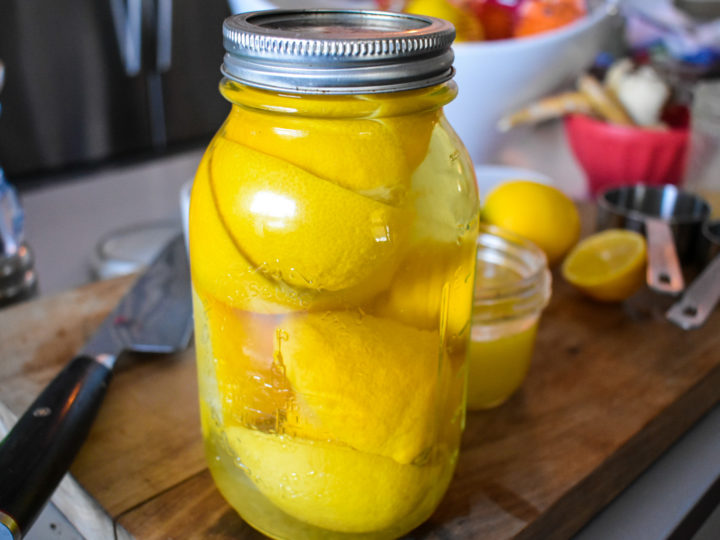If you are like me and making the most of citrus season, you may have a lot of rinds starting to accumulate. This is a How-To to create your own easy Lemon Vinegar for Cleaning. The process works for any citrus but lemon is my favorite and I love the grease-cutting power, antimicrobial properties, and lemony freshness.
I use this in both my kitchen and the bathroom. It is safe for my little guy, cleans well with a bit of effort, has no harsh smells, and costs pennies to make because it is literally made from leftovers!
Some people only use lemon peels in their Lemon Vinegar, I do not. I use lemon juice as an ingredient in other cleaning products, 1/2 lemons and salt help clean my kitchen sink so I am not fussed about using the whole rinds after juicing. This is a great way to use your leftover lemon rinds after a delicious Pancake Breakfast or making a Lemon Vinaigrette. Plus it saves a step! I do suggest you thoroughly strain your solution to ensure you won’t block any spray bottles though.
Method
All you have to do is cover your lemon rinds with vinegar, let steep for a couple of weeks, strain well, and use. I use mine both straight and diluted, on all surfaces except stone. We have no natural stone in our home – all wood, stainless, ceramic, and vinyl.
You can also use your lemon vinegar in other cleaning products. I have a great cleaner that I use on my stove stop that has my lemon vinegar in it as well. Window cleaner, furniture polish, cutting board cleaner …so many uses.
Remember this is acidic so be careful around materials sensitive to acid like carpets.

Cleaning: Lemon Vinegar
Lemon vinegar is an excellent cleaning ingredient. It cuts grease well, leaves a lemony fresh scent and is VERY easy to make.
Materials
- Lemon rinds
- White Vinegar or White Cleaning Vinegar
- Quart Jar
- Spray Bottle. I use glass bottles from Amazon.
Instructions
- Gather lemon rinds. You easily use rinds leftover from other projects, you want to use your leftovers, so it costs you nothing.
- Place your lemon rinds, as they are, into a clean quart jar. Pour in white vinegar to just cover. If you have space in your jar, add more rinds the next time you have them and top up with vinegar as you go.
- Once the jar is full, leave it in a cool dark place for a week to two weeks. Check the lemons remain covered by vinegar occasionally and give it a swish.
- When ready to use, strain well. I use a wire colander and a juice bag, then I run it through a coffee filter. This ensures it is free of bits that would clog up my sprayer.
- Pour strained and filtered vinegar into a clean sprayer bottle and use as needed.
Notes
- Some instructions for lemon vinegar suggest only using the peel. As long as you strain well, I do not believe this is necessary. I never have, if there is a short cut I can take, then I do.

[…] which means I can adjust for our specific tastes. You can also use your leftover lemon rinds to make Lemon Vinegar for Cleaning which makes this a two […]